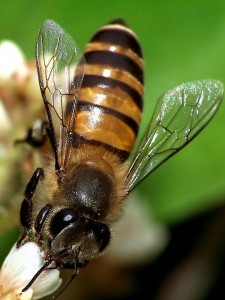Neonicotinoid pesticides have long-term effects on wild bee populations
 photo credit; Charles Lam
photo credit; Charles Lam
A new study, published in the high-impact journal, Nature Communications, analyzed almost two decades’ worth of data on 62 different species of wild bees and found that sub-lethal exposure to neonicotinoid pesticides can lead to population declines. While many studies primarily conducted on the European honeybee have identified negative impacts on individual bees and the health of bee hives (a review of the literature can be found here), this is the first long-term, large-scale study to investigate the effect of neonicotinoids on wild bees. Researchers analyzed bee survey data collected by citizen scientists across England in combination with land cover data for oilseed rape (the crop used to produce canola oil) which is largely planted with neonicotinoid-coated seeds, and pesticide data to model changes in bee populations that forage on oilseed rape and those that do not. Honeybees were excluded from the study because beekeepers manage hives by physically moving them to different locations. The results of the study show that wild bee species that forage on neonicotinoid-treated oilseed rape experienced negative affects three times greater than bees that do not forage on oilseed rape. This robust correlation between neonicotinoid exposure and bee population decline “provides the first evidence for community-level national-scale impacts on the persistence of wild bee populations resulting from exposure to neonicotinoid treated oilseed rape crops,” the authors point out.


